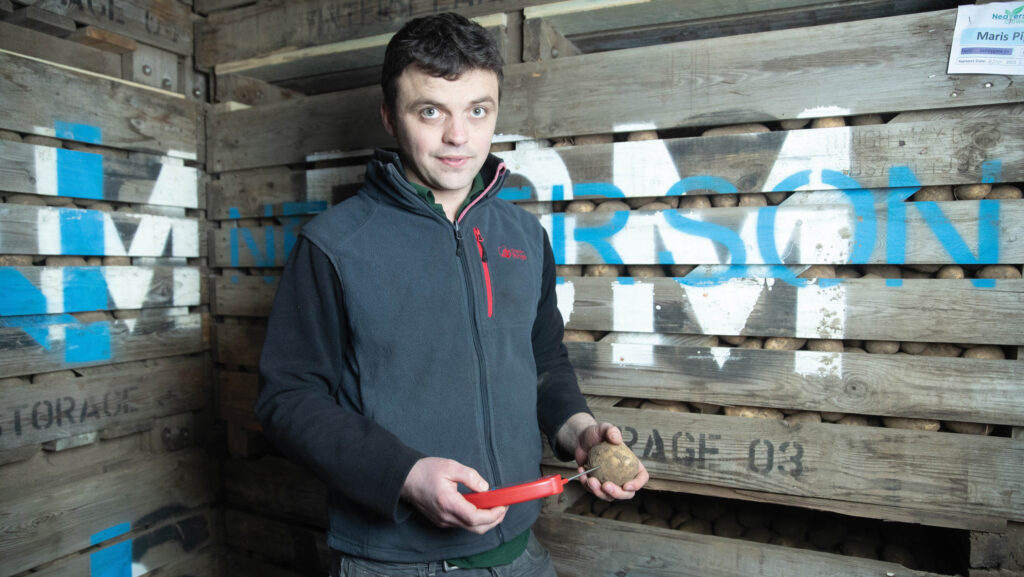Opinion: Spectre of spud harvest sparks tractor conundrum
 Mike Neaverson © Tim Scrivener
Mike Neaverson © Tim Scrivener We got potato planting wrapped up on 10 May, a week later than average but nearly a fortnight earlier than last year.
I need to thank our fantastic planting gang – David, Ken, Jack and Sam – for putting up with my frequent changes of plan and an insistence that they start at a time of the morning normally seen only by dairy farmers.
Thoughts now turn to how we’re going to get them out of the ground again.
See also: Opinion – it’s been another ‘perfectly average’ harvest
With last autumn fresh in the memory, I don’t think that it’s possible to ever have too much harvesting and drilling capacity available during those crucial October weeks.
And given that I have an unyielding penchant for trailed sprayers and pickers, that probably means more tractors.
I should say at this point that I don’t care much about tractors. They all break down just as regularly as each other, and at largely equal expense.
What matters is four things: their tyres, how good the backup is when they do go wrong, how much they cost to own in total, and whether the skilled and difficult-to-replace people who work with me enjoy spending more than 1,500 hours a year each driving them.
Historically, we’ve stuck most of the hard work on two machines.
After a bad run of expensive gearbox trouble, I’d calculated – rightly or wrongly – that as long as you did more than 1,200 hours a year of mostly hard work, the cost of finance and depreciation on a warrantied, newer machine was roughly the same as what you would end up shelling out for repairs on an older model.
You were just trading one for the other. The fewer hours you did, and the easier and less time-pressured the work, the more viable running older machinery became.
But it was comforting to know that should your sparkly prime mover throw a big end, the dealer would help you out with a loan machine to get you out of the mire.
Haven’t times changed, though. A quadrupling of hire-purchase rates and an astonishing rise in the price of new tractors relative to their second-hand values has flipped that model on its head.
For me, a new tractor now ties up too much cash while halving in value in the first four years.
We could hire one for the season, of course. With interest and depreciation rates so high, it’s starting to become a bit more tempting than it was a few years ago.
But our busy time is protracted, and therefore hiring one is expensive.
Growing potatoes, I need uncommon additions such as front ptos and the right specification of wheels, which you can never seem to find in combination.
I’m sure that a farm consultant would not agree with the following statement, but I maintain that as long as the costs are vaguely comparable, I would rather “paddle my own canoe” paying interest than I would muddle along paying rent.
In all honesty, I’m not sure what I’m going to do. The same consultant would probably look at our business and say that we’ve got too much horsepower already.
But if I have a small fleet of vaguely similar tractors that can do basically every job, it’s an insurance policy that helps me sleep at night.
And sometimes, I get to enjoy driving them too.

